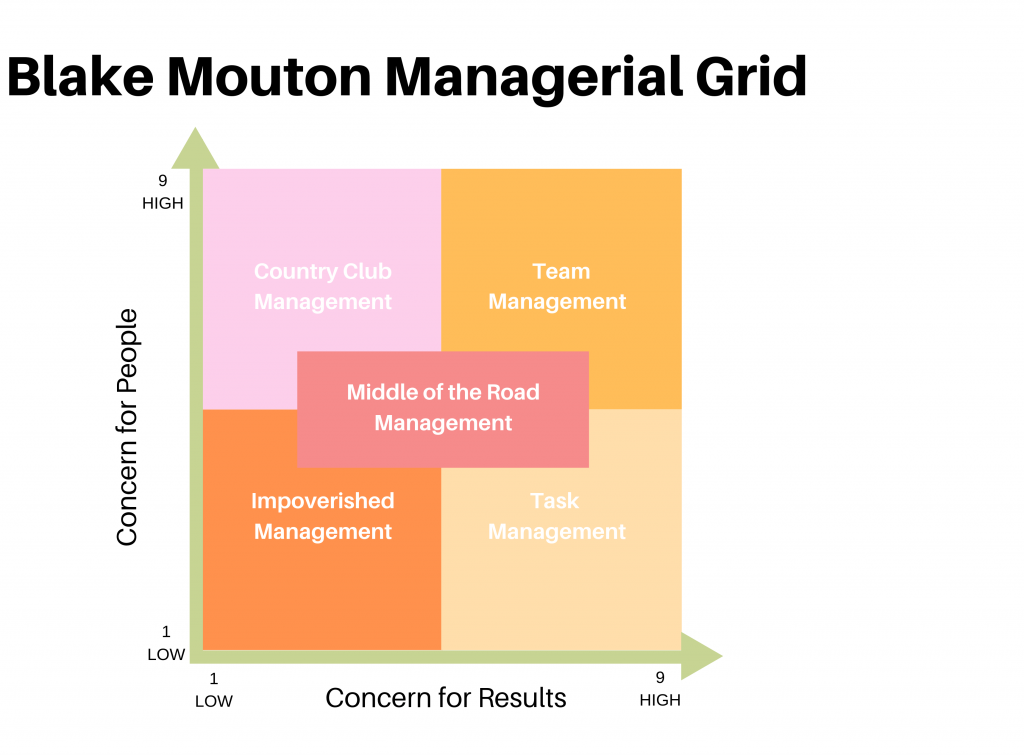A brainchild of Robert Blake and Jane Mouton , the Blake/Mouton’s Managerial Grid correlates leadership styles with the behaviors of the individuals. This model tends to interpret and understand approach of managers towards human resources in an organization. The model considers both the management styles and relations to evaluate the behaviors and characteristics. The model uses two axis, concern for task and concern for people. Evaluating the two axis and the possibilities generated by it results in a matrix of 81 different management styles. Out of these 81 styles, the following five are the most significant.
Country Club Management
This type of management is more concerned for people than for the productivity. It can be termed as low task but high relationship leadership style as the emphasis of the leader is on creating positive relationship with the employees. This type of leadership is characterized by attention towards the needs of the employees and a comfortable working and organizational environment. Social interaction is common in this style of leadership but the leader is afraid to put the foot down and use legitimate or coercive powers , as he thinks such use will result in creating resentment and make the relationships vulnerable and weak.
Authority- obedience /Task management
This type of leadership is more concerned with efficiency and productivity. The focus of the leader is on getting the things done and not on creating positive relationships with the employees. Little or no thought is given to the needs of the individuals working in the organization. A lot of importance is given to getting the job done. There is little or no contribution from the employees and there is no focus on employee development. This leadership style can be termed as autocratic.
Impoverished management
Impoverished leaders are leaders with little or no concern for the human or production element in the organizations. They do not put any effort to get the job done. They usually employ the method of delegate and disappear. The leaders are not committed towards completion of a task and the employees are free as no direction is given by such managers. Such leadership style cannot survive in responsible organizations.

Middle of the Road / Organization Management Leadership Style
This style of management is concerned with creating a balance between the productivity and the morale of the people. The goal of this leadership is to get the work done by maintaining the morale of the employees at a satisfactory level. This style of leadership succeeds in meeting the goals but not exceeds them.
Team Management Leadership Style
Team management is the best style of management and leadership. The leader is concerned with high task productivity and an excellent relationship with the employees. The leader establishes a trusting relationship between him and the employees. The leader respects his employees and leads by positive example. The leader creates an environment that fosters team work and respect and helps individuals achieve their highest potential.
First four leadership styles in the grid are not effective. The best style of leadership can be considered to be the team management style. This type of management style results in improving the performance of the employees, increasing employee satisfaction and decreasing absenteeism and employee turnover. But the team management approach is not applicable in certain situations of crises that demand immediate reaction.
The leaders should use a combination of these styles as different situations require different styles. If the goal of the leader is to make the team and the employees self reliant, ideally adopting the style of impoverished leader will help in achieving this goal. If the employees are not disciplined, autocratic style will help in achieving the discipline.
The managerial grid helps leaders to evaluate themselves and their styles but the measurement needs to be accurate and truthful, as people usually have a tendency of exaggeration and self deception. The managerial grid promotes creation of a balance between the human side and the task side of the managerial concerns. It encourages managers to focus on the human side and interactions and relationships with the employees so that the leaders become adaptable and accustomed to the changes in behaviors, situations and resources and act accordingly.
Ayesha thinks that the managerial grid has certain limitations. The grid suggests the most effective leadership style that can be applied in every situation, which is not possible in real life. The leadership styles articulated in the managerial grid limit the real life capabilities of managers by limiting them to act inflexibly.
